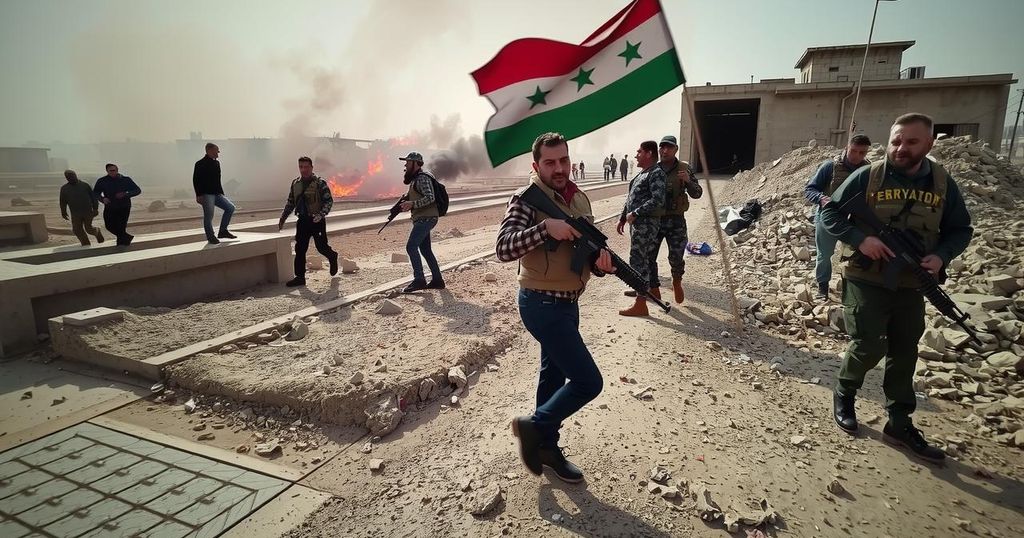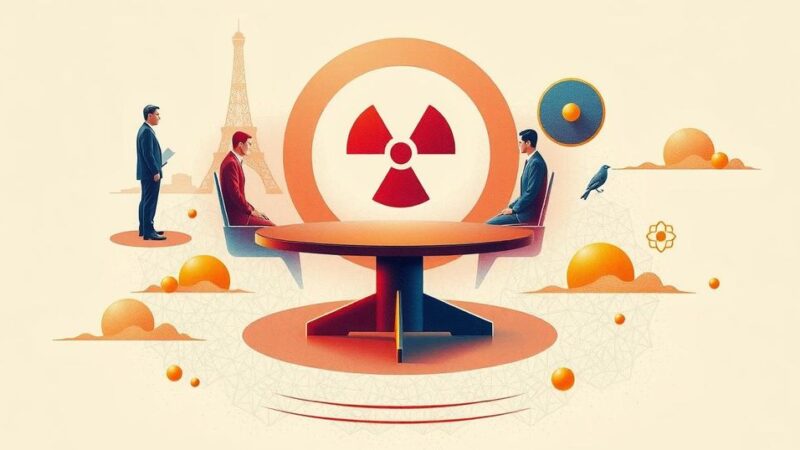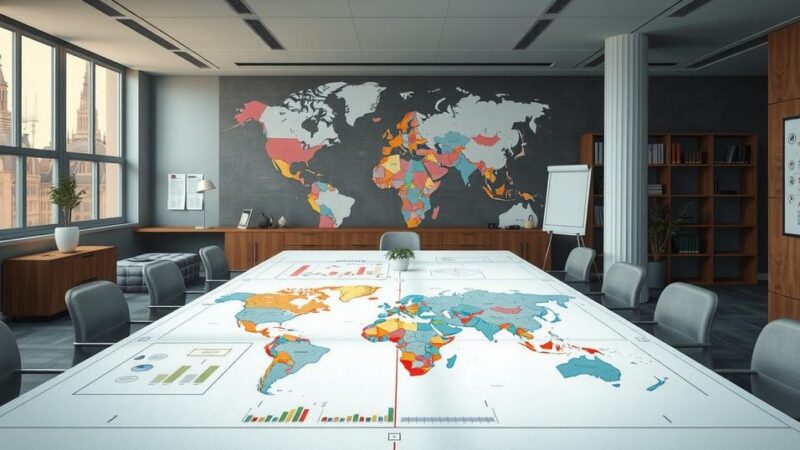The Syrian civil war has erupted anew with HTS’s resurgence, retaking Aleppo with little resistance. This follows a long history marked by foreign interventions, including support for the Assad regime by Russia and Iran. Geopolitical shifts, particularly the war in Ukraine and the changing dynamics among regional powers, may explain the current developments. The situation raises important questions about international involvement and power reconfigurations in Syria and the surrounding region.
Syria’s civil war has resurfaced with renewed intensity, marked by the reformed rebel alliance, Hayat Tahrir al-Sham (HTS), swiftly retaking Aleppo and posing minimal resistance to their advances. This revival recalls the early days of the conflict in 2011 when a peaceful push for democracy evolved into a widespread rebellion against President Bashar Assad’s regime. Initially, Assad’s army failed to suppress the armed opposition; however, the tide turned with decisive foreign assistance from Russia, Iran, and Hezbollah, reversing the rebels’ progress and entrenching the regime.
Despite the West’s initial hope for a successful intervention similar to Libya, the lack of substantial support led to the fragmentation of the rebel factions, some of which became radicalized, culminating in the rise of terrorist groups such as ISIS. As the conflict persisted, it caused widespread displacement, casualties, and a significant refugee crisis. After years of stagnation, the recent escalations—particularly the capture of Aleppo by HTS—have drawn attention to the shifting geopolitical dynamics influencing the Syrian situation.
The current developments are intertwined with international conflicts, particularly the war in Ukraine, which has diverted Russian military resources away from Syria, constraining their ability to support Assad effectively. Concurrently, Hezbollah’s weakening, due to ongoing challenges in Lebanon, further diminishes its capacity to assist Assad. Iran’s position in Syria is likewise precarious, as its proxies face difficulties against Israel’s military operations.
The circumstances surrounding the HTS offensive suggest a convergence of regional powers re-evaluating their strategies in light of geopolitical shifts. Experts indicate the interplay of various elements—including U.S. foreign policy under a possibly re-elected Donald Trump—has allowed HTS’s resurgence to materialize. As President Putin alludes to a “new world order,” the unfolding events in Syria may be indicative of larger, unanticipated global reconfigurations.
Understanding the Syrian civil war’s trajectory necessitates a recognition of its origins in the Arab Spring of 2011, where initial peaceful protests were met with violent repression by the Assad regime. The subsequent armed rebellion demonstrated a significant shift in power dynamics within the country. The conflict saw heavy involvement from foreign actors including Russia, Iran, and Hezbollah, each pursuing their respective strategic interests. The implications of these interventions were profound, culminating in a protracted civil war that saw the emergence of radical factions and a humanitarian crisis that garnered little international attention in subsequent years. The reemergence of conflict, particularly in Aleppo, signals a critical moment that re-examines the entrenched geopolitical influences at play in the region, exacerbated by wider regional conflicts and differing political agendas.
The renewal of hostilities in Syria, highlighted by HTS’s recent territorial gains, underscores an evolving conflict deeply affected by various regional and international factors. The interplay of foreign involvement, internal factionalism, and changing political landscapes signifies a pivotal moment that may reshape not only the future of Syria but also the broader geopolitical dynamics of the Middle East. As actors like Russia, Turkey, Iran, and Israel navigate their positions, the implications of these developments warrant close scrutiny.
Original Source: abcnews.go.com






